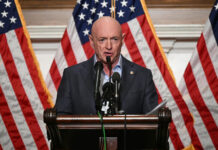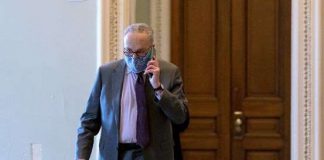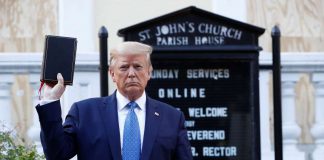JULY 3, 2024
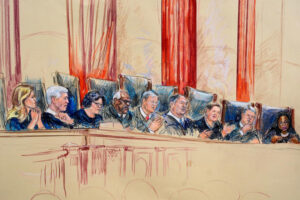
WASHINGTON, D.C.— Congress might be gridlocked and the postdebate White House reeling, but at the Supreme Court, Chief Justice John Roberts showed himself firmly in charge.
That was clear Monday with Roberts’s resounding declaration of presidential immunity for Donald Trump. The term that ended wasn’t merely a conservative triumph but one that moved the law to match the priorities of the chief justice.
In a series of watershed opinions, Roberts led the court’s conservatives to curb federal power. The court raised barriers to regulations that impose costs on businesses and property owners—at the expense, liberal dissenters complained, of the government’s ability to confront emerging national problems.
At the same time, Roberts and his majority clipped the wings of prosecutors and private citizens to seek legal sanctions against officeholders. Decisions reduced the scope of federal bribery law and benefited Trump and those of his followers who attacked the Capitol on Jan. 6, 2021.
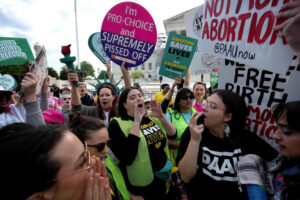
But when it came to issues Roberts found less urgent, such as imposing further restrictions on access to abortion or regulating social media to promote conservative viewpoints, the chief justice approved ideological ceasefires through procedural rulings that left hard choices for another day.
Presidential power and regulatory rollback “are the areas he cares about,” says David Strauss, faculty director of the Supreme Court clinic at the University of Chicago Law School. “Gun rights, abortion—those aren’t as high on his list.”
According to the EmpiricalScotus blog, in the 2023-24 term Roberts was more frequently in the majority than any other justice: in 96% of argued cases.
As chief, when in the majority Roberts has the power to assign the opinion to any of his colleagues; he chose himself for some of the most consequential. Those included Trump v. U.S., which found that former presidents enjoy sweeping immunity for crimes they might have committed while in office, and Loper Bright Enterprises v. Raimondo, overruling a 40-year-old precedent so as to increase federal judges’ authority to overturn federal agency regulations.
Other decisions, including another issued Monday that the Trump case overshadowed, have likewise altered the rules of decision to shift power from regulators and Congress to the federal judiciary that Roberts heads.
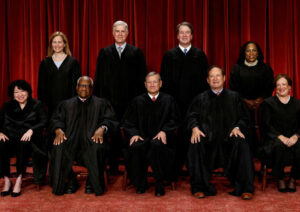
Among the chief’s goals, “increasing judicial power would be at the top of the list,” said Deborah Pearlstein, who directs the program in law and public policy at Princeton University. “The number of his decisions that cite Marbury v. Madison to say what the court’s power is, is remarkable,” she said, referring to the foundational opinion written by Chief Justice John Marshall in 1803. Roberts cited Marbury in both the Trump and Loper Bright opinions he wrote.
The latest term was a striking contrast from two years ago, when the chief justice stood alone in an effort to find middle ground on abortion rights.
Where Roberts proposed rolling back Roe v. Wade without fully eliminating women’s right to end unwanted pregnancies, his five fellow conservatives pressed ahead to overrule a 1973 precedent they declared was wrong from the start. Three liberal dissenters gave no ground on what they considered a fundamental individual right.
In the 2022 case, Dobbs v. Jackson Women’s Health Organization, Roberts’s solo opinion futilely urged his colleagues to heed “a simple yet fundamental principle of judicial restraint: If it is not necessary to decide more to dispose of a case, then it is necessary not to decide more.”
The sentiment recalled his 2007 Atlantic magazine interview, when he said he was “committed to broad consensus” among the justices because closely divided decisions diminish public respect for the court as a legal institution rather than a political branch.
Now in his 19th year as chief justice, Roberts made clear that, in certain fields, reaching what he considered the most correct result was more important than finding a way to bring at least one liberal justice into the fold—even as public approval of the court, particularly among Democrats and independents, hovers at historic lows.
The chief justice brooked no compromise this term when it came to his view of the constitutional framework—one that gives political actors leeway to act without fear of legal consequences and limits government ability to intervene in free-market decisions.
In other cases, however, Roberts proved willing to let difficult questions linger so as to build broader consensus, rather than push for sharper outcomes likely to further divide the court.
Abortion was one such area. The justices heard their first abortion cases since overruling Roe, and in both suits found technical reasons that kept the court from deciding whether the procedure should be limited even further under federal law.
In one, the court unanimously threw out a suit intended to curtail access to the abortion drug mifepristone, Food and Drug Administration v. Alliance for Hippocratic Medicine, finding that the activist plaintiffs, who neither use nor prescribe the medication, had no legal standing to get their arguments into court. And it dismissed a case pitting Idaho’s strict abortion ban against the Justice Department, which argued that a federal hospital law authorized doctors nationwide to perform emergency abortions when necessary to preserve the physical health of a woman experiencing a medical crisis.
That decision, Moyle v. U.S., saw the court’s three liberal justices, Sonia Sotomayor, Elena Kagan and Ketanji Brown-Jackson, assert that federal law prevails. Their most conservative colleagues, Clarence Thomas, Samuel Alito and Neil Gorsuch, contended that Idaho’s ban takes precedence.
Roberts, joined by the two justices who most frequently vote with him, Brett Kavanaugh and Amy Coney Barrett, took the view that the differences between federal and state law were too cloudy to resolve—a position that sent the dispute back to the lower courts for further proceedings.

But when it came to Trump, Roberts went the whole nine yards. Backed only by a bare majority of his most conservative colleagues, the chief justice chose to demarcate vast zones of protection for Trump and future presidents accused of wrongdoing, bypassing blistering liberal dissents and even criticism from Barrett, the court’s most junior conservative.
Roberts held firm even though there were paths to resolve the cases that may have generated nearly unanimous judgments. In March, for instance, all nine justices voted to overrule a Colorado Supreme Court decision disqualifying Trump from the ballot under the 14th Amendment, which bars former officeholders who engaged in insurrection or rebellion from future office. In Trump v. Anderson, the court unanimously agreed that states lack the authority to enforce the provision against presidential candidates.
But in an unsigned opinion, Roberts, Thomas, Alito, Gorsuch and Kavanaugh went further, suggesting that the only way the insurrection clause could be implemented would be through federal legislation—a doubtful prospect in a divided Congress. Sotomayor, Kagan and Jackson filed an opinion arguing the majority needlessly closed off other potential methods of federal enforcement, such as through the judiciary. Barrett took the same view in a separate option—although she chided the liberals for amplifying their “disagreement with stridency.”
On the term’s final day, Roberts delivered his landmark ruling granting Trump expansive immunity for alleged crimes committed through his official acts as president. Thomas, Alito, Gorsuch and Kavanaugh joined him in full.
Barrett joined most of the Roberts opinion, but dissented from a section that limited the evidence prosecutors could introduce against Trump. She suggested another approach could have brought greater consensus, carving out a core of presidential immunity that didn’t enable the vast range of criminality the majority had excepted from prosecution. “The Court, the dissenting Justices and the Special Counsel all accept that some prosecutions of a President’s official conduct may be unconstitutional,” she wrote.
Sotomayor’s dissent, joined by Kagan and Jackson, didn’t end with the traditional valediction, “respectfully,” which signals potential agreement in future cases.
She chose something more ominous: “With fear for our democracy, I dissent.”
Courtesy: WSJ







